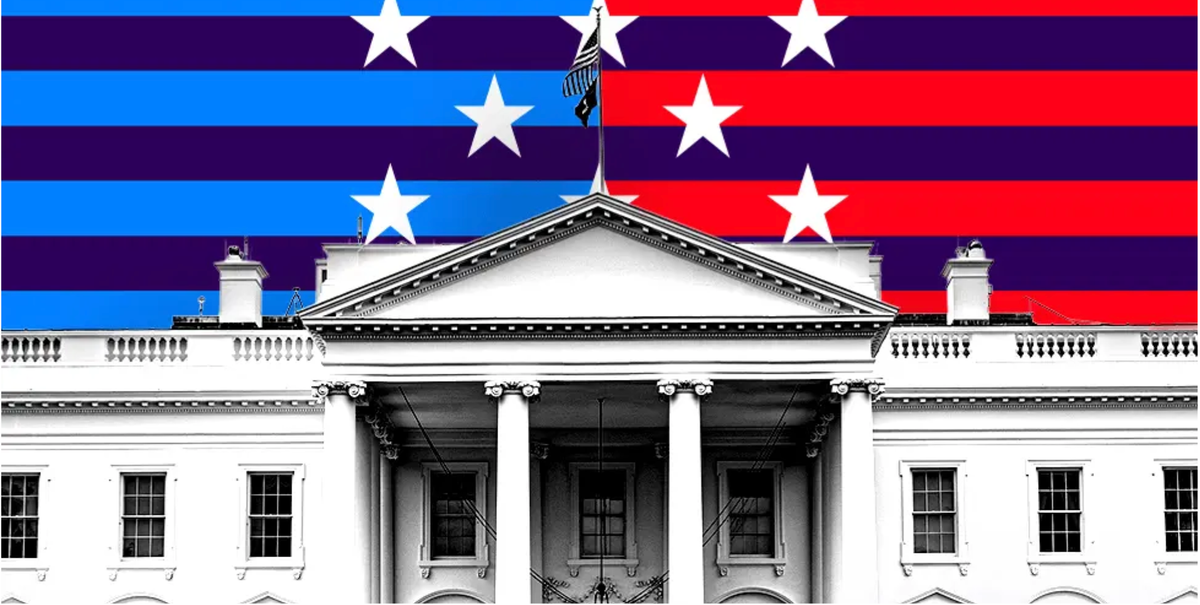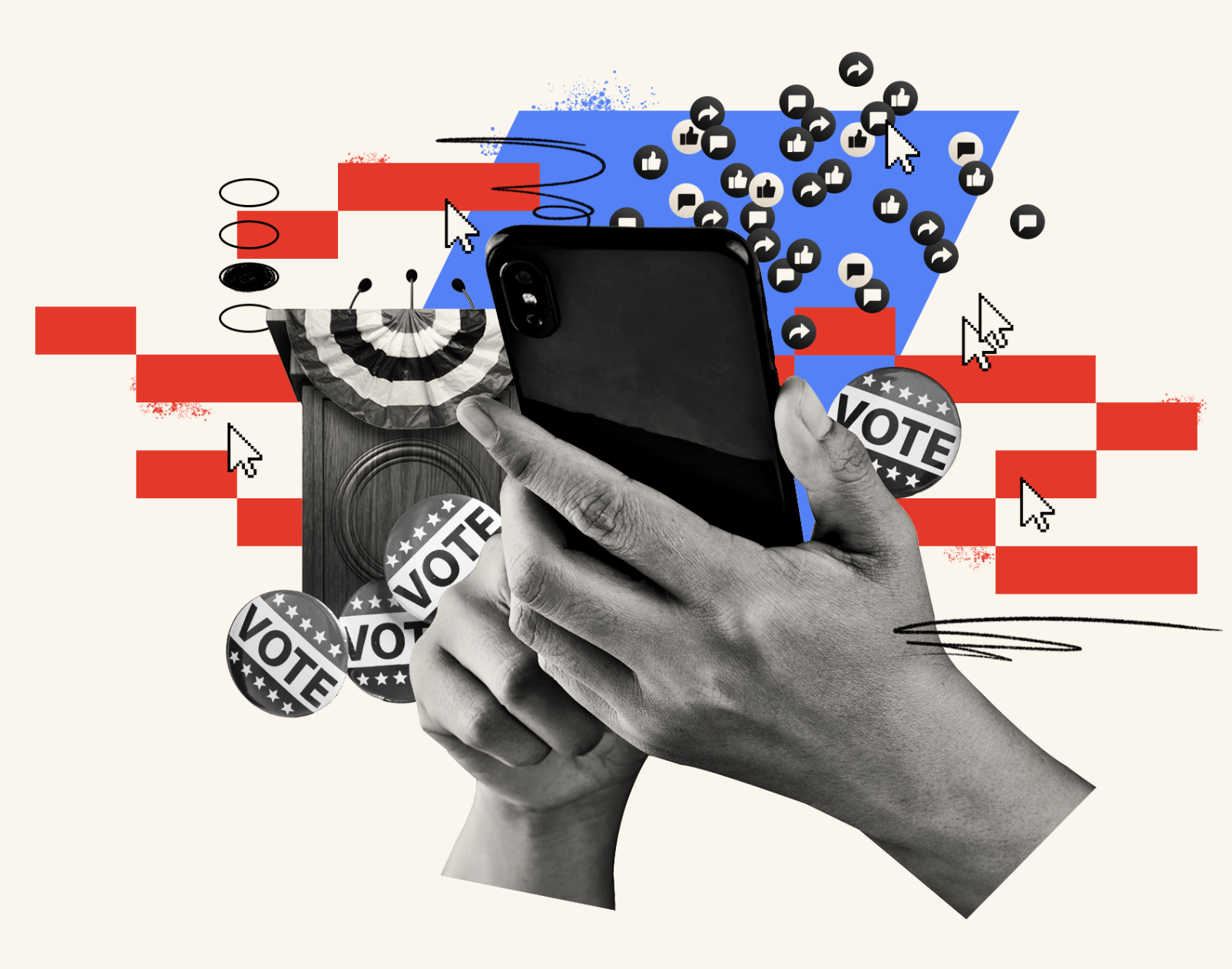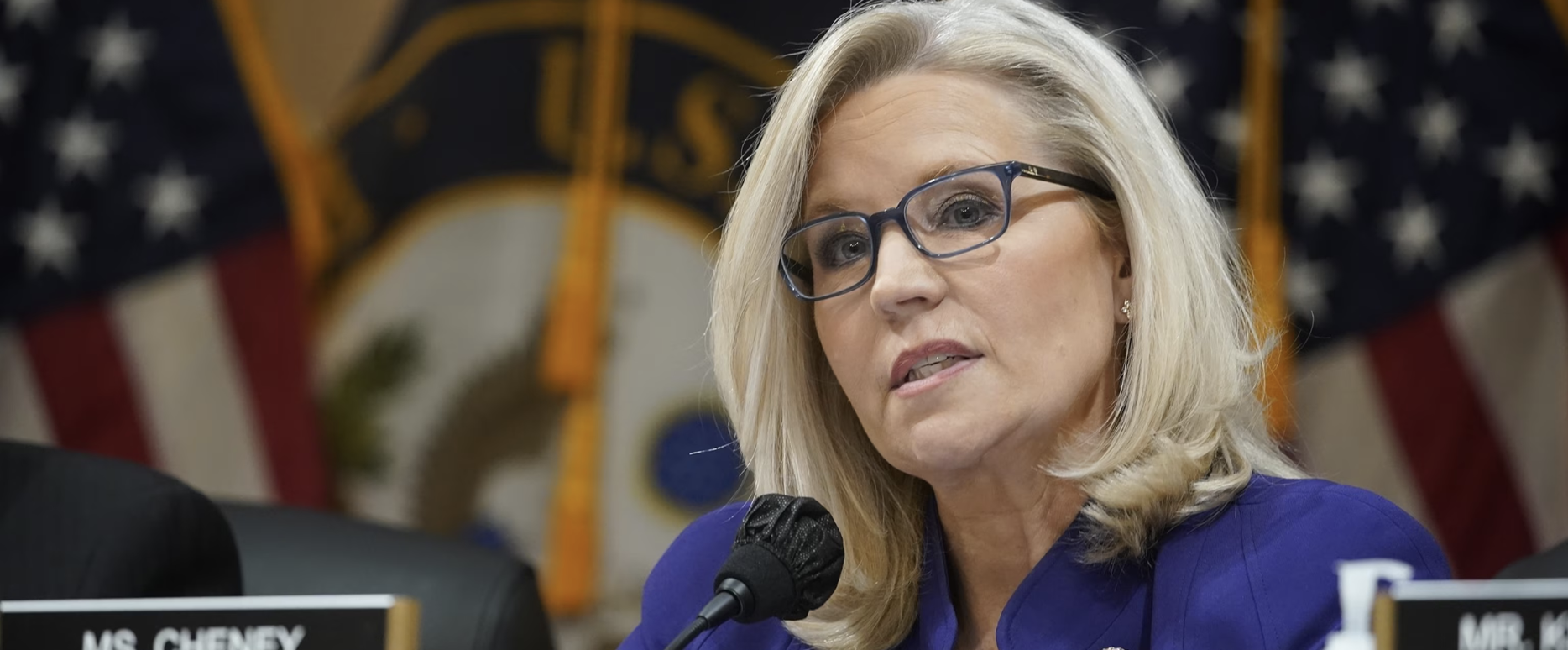OPINION: Checking In With U.S. Political Media Pre-Election
By Georgia Trites ’25, Staff Writer; Edited by Rebecca Liu ’25, Head Editor-in-Chief

By the time this piece is published, the U.S. presidential election will be just days away. Perhaps, by the time you’re reading it, the votes of tens of millions of Americans will have been cast and counted, and the identity of the 47th president of the United States will have been announced. With that in mind, you may ask yourselves what value there is in a retrospective on the media coverage of an election cycle that is already coming to a close.
Although the disillusioned American public is tuning in less to major fixtures of the election media cycle (like the presidential debate and interviews with major networks) than they have in previous years, the media and its portrayal of candidates remain pivotal. This is particularly true as it pertains to the opinions and votes of the fabled undecided voter, whose electoral inclinations may prove consequential in determining the outcome of the election. In other words, even though many prospective voters have made up their minds about who they’re planning to support come November 5th, the dispositions of those who haven’t or those who can still be convinced otherwise will likely prove decisive when votes are tallied up and a winner is declared. More than half of Americans (about 69% as of September) say they are following news coverage “of candidates for the 2024 presidential election very or fairly closely,” according to polling from the Pew Research Center. Many are likely watching to reaffirm their preexisting beliefs and further reinforce their confirmation bias – but some are engaging with the media in a genuine effort to collect information that will have a tangible effect on how they cast their ballot.

This is what makes American media outlets, specifically in terms of their coverage of the nationwide election (which is one of the most important recurring events in global politics, considering the implications it has for the domestic and foreign policy of one of the most powerful nations in the world), worth appraising, even after a candidate has been elected and inaugurated. I decided to check in with the present state of American mass media a few weeks before the election by watching four hours of primetime television, each on a different network (CNN, ABC, Fox News, and CBS), on four different days. Unsurprisingly, doing so led me to a series of conclusions which I will attempt to parse for the next few hundred words.
From Dwight D. Eisenhower’s campaign funding the first TV commercial advertising a presidential candidate to John F. Kennedy and Richard Nixon’s appearances in America’s first televised presidential debate, the development of mass media in the United States and the sensationalization of electoral politics have had convergent trajectories. Today, we’re so accustomed to an explosive, dramatic, and controversial media landscape during election cycles, with an increased resemblance of politics to reality television, that anything else seems abnormal. An interviewee I watched on CNN lamented that he “fell asleep” during the vice presidential debate between J.D. Vance and Tim Walz, just because they showed each other a modicum of civility and more or less managed to stay focused on policy. Trump’s 2016 election win was a tipping point; since then, a few distinct strategies have emerged that fulfill the dual aims of keeping viewers’ attention and manufacturing a wellspring of content that can be dipped into whenever a slow news day comes along.
One of these strategies is “horse race” political coverage, which forgoes thoughtful or cogent analysis of candidates’ personal history or policy plans in favour of an assessment of elections that parallels the way journalists would tend to evaluate a horse race. Horse race coverage involves, in the words of H.T. Reynolds, focus on “campaign hoopla … the size of crowds, surges and declines in the polls, organizational triumphs and failures, endorsements won and lost, and above all, the ebb and flow of momentum.” Just like a horse race, coverage is lavished upon the particulars of who is pulling ahead or falling behind at any given moment. After hours of consuming election-related content that follows this pattern, it was easy to feel like I knew far more about candidates’ campaigns than I did about them as people or their intentions for the country. Such an approach to generating electoral news captures people’s attention because it makes a serious political process with a bevy of implications for the livelihoods of hundreds of millions of people feel like a sporting event, complete with all the “drama … tension … [and] unexpected plays” we demand from our entertainment. Candidates begin to feel more like the home team, the embittered underdogs struggling against the powers that be, and less like the well-funded amalgamation of corporate interests and political posturing that their carefully curated images truly represent.
I noticed this multiple times during my four-day foray into American political media. For instance, Liz Cheney (daughter of former Vice President Dick Cheney, established Republican politician, and member of the House of Representatives January 6th Committee) endorsed Kamala Harris’ campaign as well as the campaigns of Democrats in key congressional districts, which received a notable amount of lip service. Polling was exhaustively dissected, as were celebrity endorsements and the impact that specific voter demographics could have on the outcome of the election.

Another strategy media outlets use to optimize the profitability of their coverage of electoral politics is the repeated use of sound bites, which often involves a brief and easily recognizable clip of a presidential candidate being referenced again and again until it is cemented into viewers’ minds and potentially changes their view of said candidate – at the expense of the candidate’s words having practically lost their meaning along the way. The continual relitigation of these sound bites allows news outlets to make reporting mountains out of political molehills. Doing so with a distinct turn of phrase that paints a given candidate in a positive or negative light expands upon the tools these same outlets use to relentlessly craft narratives.
One example I saw during my time watching CNN and ABC was the sound bite of Donald Trump appearing to suggest that he believes the National Guard and the U.S. military should, “if necessary,” be used on the “radical left lunatics” that he considers to be the “enemy within.” Another still is the sound bite where Kamala Harris, after being asked whether she would do anything differently than incumbent president Joe Biden, under whom she is currently serving as Vice President, responded that there’s “not a thing that comes to mind” which she would have opted to change throughout his administration. According to the same Pew Research Center polling I referenced earlier, U.S. adults say they see the most news about “candidates’ actions [and] comments on the campaign trail,” even though this topic only ranks fourth in terms of what American voters are most interested in. They’re more interested in “the candidates’ stances on issues … the candidates’ moral characters … [and] the candidates’ career experiences,” but they report seeing these subjects discussed far less.
Sound bites certainly have their place in electoral coverage, since candidates should be held accountable for their words by the public. Moreover, what politicians choose to say in the public eye can reveal a great deal about their character, perspectives, and vision for the U.S. However, placing excessive emphasis on sound bites often leads to them becoming divorced from the context in which they were said, falsely framed as though they are definitively representative of candidates’ actual beliefs or of how candidates would conduct themselves in office.
An instance where controversy ballooned after a media maelstrom was sparked by a sound bite is JD Vance’s now infamous comments about “childless cat ladies.” While they certainly indicate what I personally believe to be a misogynistic streak and a deep-seated resentment of women who do not conform to his standards for womanhood, I think that Vance’s actions, many of which illustrate those same qualities, merit more coverage than a few words he spoke out of turn in a 2021 interview. It’s not crude comments and demeaning put-downs that make Vance dangerous, in my mind, to the state of women’s rights in the United States – it’s his philosophy, his policies, and his outlook for the future of America as we know it. The attention devoted to sound bites as opposed to policy ought to be proportional to the relevance of each subject to the material conditions of Americans’ lives over the next four years.
It's tempting to take in and digest news uncritically – especially because it is often presented uncritically, with bias built into the very language used to discuss the same event, often betraying a partisan slant. However, it’s important to remember that every network, even those that pride themselves on telling it like it is, has a narrative. If they didn’t, they would likely be unable to secure the sponsorships and advertising deals necessary to stay in business. For example, many of the networks that are biased in favour of the Democratic Party narrativize the election, presenting each successive development as hurdles along the way to an unquestioned outcome of Harris winning the election. I noticed this a great deal when considering which stories were highlighted and which were overlooked, where time was focused, and the way segments were worded (which questioned how Harris could win instead of outlining the contours of the path to the White House for all candidates).
Except for one dismissive comment about the Green Party’s presidential candidate, Jill Stein, every outlet focused exclusively on the candidates from the Democratic and Republican parties, Kamala Harris and Donald Trump. This makes sense considering the United State’s status as a two-party system where it is virtually impossible for a third-party candidate to win (given that the vestigial Electoral College remains in place and will likely do so in perpetuity if the Republican establishment has anything to say about it). But it does nothing to counteract the mainstream media’s palpable partisan bias. On the contrary, it plays into the self-fulfilling prophecy whereby the American public sees third parties as an untenable alternative to the two-party system. Third parties receive very few votes and are unable to establish themselves as mainstays in the electoral system, and the primacy of the two-party dynamic is further entrenched.
Eliminating bias entirely is impossible, but it is very much possible for news sources to be transparent about their biases and where they stem from. Media taking accountability for its own biases and establishing a dialogue with audiences about the variety of frameworks and viewpoints through which elections can be analyzed could, at the very least, minimize the understandable amount of election fatigue the American public experiences.



